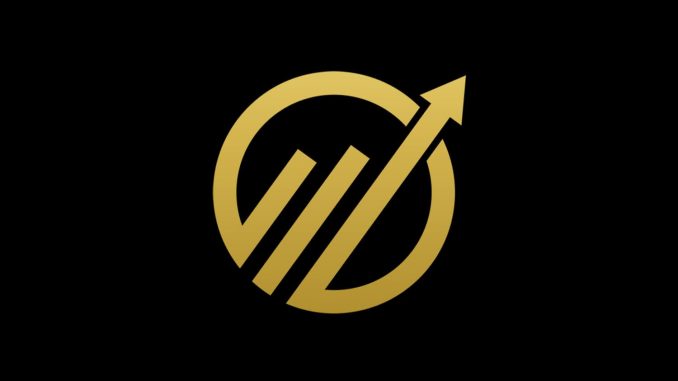
In the digital marketing industry, acronyms are everywhere. If you’re new to the industry, or even if you’re not, it can sometimes feel like you’re listening in on a secret language. And in a way, you are.
But knowledge is power, and understanding digital marketing acronyms can help you feel like an old pro in no time. Today, we’re going to run down some of the most popular digital marketing acronyms so you can become fluent in the jargon. From CTA to SEO to B2B, we’ve got you covered.
What Is Digital Marketing?
Before we get into acronyms, it’s helpful to know exactly what we mean when we say digital marketing. Put simply, digital marketing is marketing that uses the Internet and digital technologies to promote products and services.
Lego’s Rebuild The World Campaign was arguably one of the best digital marketing experiences of 2020. What made it so special? Interestingly, Rebuild The World was the Danish toy company’s first marketing campaign in over three decades.
With 11 million online views, Lego’s visually appealing, aspirational storytelling stood out in a striking way. They took a clear stance on social issues, encouraging their audience to be ethical consumers who have fun along the way. Perhaps most importantly, they answered the age-old question—do unicorns really exist?
Digital Marketing Acronyms
Below, we’ll look at ten digital marketing acronyms you need to know. Understanding not only their meaning, but also their purpose, is critical to any website’s performance. While some, like SEO, may seem obvious, their precise definition can sometimes feel unclear and elusive.
Never fear. By the time we’re through here, you’ll know how modifying the CTA can improve your CTR. You’ll also know the difference between B2B and B2C. So go ahead and grab your SPF. Your future’s about to be a whole lot brighter.
SEO
SEO stands for Search Engine Optimization. It’s probably one of the most popular digital marketing acronyms. Yet, there continues to be a lot of debate and confusion around SEO. Essentially, SEO is the optimization of a website in terms of search engine ranking.
For example, say you want your site to rank for Google. Google has several hundred ranking factors that come into play. SEO professionals can increase the quantity and quality of a website’s traffic through organic search results.
Important factors in SEO include keyword placement, unique titles and content, optimized title tags, internal linking, backlinks, and more.
CRO
Conversion Rate Optimization is similar to SEO. But with CRO, we’re looking at how we encourage a user to take action once they’re on your site. One of the most popular methods is with a clear and compelling CTA, or Call to Action. (More about that later!)
Depending on the services or product, optimization tactics might also include incentivized purchases or onsite surveys.
B2B
Business to Business simply means that one company is selling services or products to another company. Successful B2B usually involves an accessible, compelling, inspiring website. The more user-friendly and intuitive your site is, the better your chances of converting users into buyers.
B2C
Business to Consumer is when a business provides a product or service to a customer or consumer. A successful B2C site should be simple, easy to navigate, visually appealing, and provide clear details about the service or product.
CTA
You’ve seen this before! As mentioned above, the CTA is an essential component that entices users to take action. As you might have suspected, CTA stands for Call to Action. Generally, a CTA is a prominent, clickable button that leads a customer to the next step in their journey.
ROI
ROI, or Return on Investment, determines whether a business floats or sinks. Unless you see a return on everything you’ve invested, your organization is dead in the water. ROI is different from profit, however.
While profit measures business performance, ROI refers to the money you invest and the return based on your net profit.
KPI
KPI stands for Key Performance Indicator. KPI can take various forms. Depending on your industry or sector, KPI is generally based on profit and growth indicators. KPI usually refers to a series of strategic steps on the way to a larger company goal.
RFP
An RFP is a Request for Proposal. You might also know it as a creative brief, or even a website brief. An organization sends an RFP to freelancers or agencies to invite proposals based on their company’s unique needs and goals. Your RFP is an essential aspect of the design and development of your website or any new marketing project.
PPC
PPC stands for Pay Per Click. PPC is a marketing strategy wherein a website owner can pay for clicks on an online ad. The ad then sends users to a landing page or special offer. Basically, PPC is a method where you can pay for visits to your website.
SERPs
Search Engine Result Pages (SERPs) are the pages that appear when someone enters a query into their search bar. Whether they are using Google, Yahoo, or some other search engine, SERPs are the websites that appear when they enter a given search term.
Digital Marketing Acronyms: Now You Know!
Now that you’re a pro on digital marketing acronyms, you might feel ready to take on the digital world! Or, you might be more convinced than ever that you need to enlist the services of the experts.
At Trendi Marketing, we know the acronyms and the ropes. It’s AAP (Always A Pleasure) to help. We understand you have plenty on your table already without getting wrapped in a web of SERPs and CTAs.
Our digital marketing experts help clients all over the United States with Web Design, SEO, PPC, and a host of other acronyms you now know by heart. Contact Trendi Marketing today to discuss how we can grow your business and build your brand.

Leave a Reply